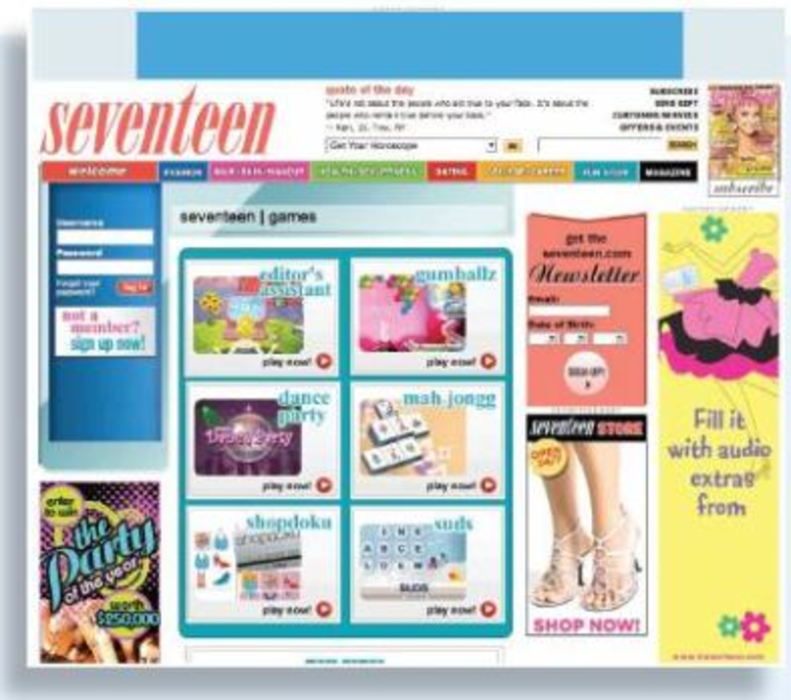Magazine publishers face a far different marketplace today than in years past. Competition online and from a wide variety of niche publications means marketers of consumer magazines needto think outside the box to build their brands and increase subscriptions.
“Traditional subscription sales are getting tougher and tougher each day,” says Ken Sheldon, director of circulation for New York. “Subscription agents and newsstand [sales] are flat or shrinking each year, so there’s more pressure on all of your other sources.”
Fully digital versions of print publications — separate from their Web sites featuring distinct content — have become more popular with readers over the past few years.
“Digital magazines are an important way to get our content out to new people through new distribution points,” says Bill Harper, VP and group publisher of Yoga Journal, which is currently working on a special digital edition in honor of Earth Day featuring video and audio downloads.
“For starters, you don’t have to print anything so it’s really efficient,” he continues, “And, I think it’s significantly important for the future of magazine formatting, particularly for international distribution.”
Sheldon agrees, pointing out that postage and paper expenses are always going up, “so it’s always helpful to generate new sources [of readership].” These types of initiatives can also improve the magazine in the eyes of the readers as well as advertisers, because of increased interaction through clickable photos and links, Harper adds.
For regional magazines like New York, local events can be effective at brand building and driving subscriptions. But the buzz factor is key when it comes to planning events targeting a younger audience, says Sheldon, and promoting in areas where that age group can be found, such as getting mentions in blogs, is essential.
“Promoting your own event is helpful to drive interest, but an independent third party speaking highly of your event can be much more powerful,” he says. He adds that blog mentions can also spur viral activity. “If we spend the money on direct mail, there’s not going to be a lot of excitement,” he says. “Not to mention, people in their early 20s aren’t the most responsive to direct mail. Magazines are a luxury to them, not a necessity.”
Another major component of any magazine’s branding is, of course, its online efforts. When Seventeen re-launched its Web site in March 2007, its major goal was to drive traffic, specifically in terms of repeat visits and amount of time spent in certain areas. Adding branded and exclusive games to the site achieved this goal and reached a broader demographic.
“The online audience will often skew at a different level that the print audience,” says Julie Hochheiser, senior Web editor at Seventeen.com. “So it’s really important for magazines to seamlessly integrate the magazine and the site — for the magazine to drive to the site and for the site to drive back to the magazine. We’ve found a really good dynamic and a way to seamlessly integrate the magazine and the site.”
With so many options for today’s readers, magazines must stand out while staying true to their message. Regardless of the medium, creativity and offering the consumer something different is most important.
“If you know a magazine appeals to a certain demographic you just need to get it into their hands and get them more exposure to the brand.” Sheldon says. “Unique ideas are going to get attention.”
Seventeen.com: Online games
When Seventeen.com relaunched its Web site in March 2007, it partnered with game software provider Arkadium to develop original games as well as games skinned with Seventeen‘s branding. The site, which does not repurpose content from the print magazine, is used as an interactive aspect of the Seventeen brand. The site’s most popular original game, Editor’s Assistant, had more than 1 million game plays in its first two months with an average playing time of 11 minutes.
Yoga Journal: Interactive digital edition
In honor of Earth Day, subscribers will be able to opt in to receive aninteractive digital version of the April/May issue of Yoga Journal in place of their usual print version. Powered by Zinio, it will include videos, advertiser links and music downloads. Additionally, Trees for the Future will plant up to 5,000 trees in India, one for every subscriber who chooses to go digital. Also, 700,000 non-subscribers will also receive the issue, and will be permitted to pass the issue along to friends.
New York: Event series promotion
New York magazine launched the New York by New York event series in April 2007 to reach younger readers. Tickets for the concerts and parties ranged from $25 to $35 and included a subscription to the magazine in the price. At these events and others around the city, 50,000 special edition miniature versions of New York were distributed to promote the series. The series generated more than 2,300 new subscriptions and 8 million media impressions on blogs and other sites.








